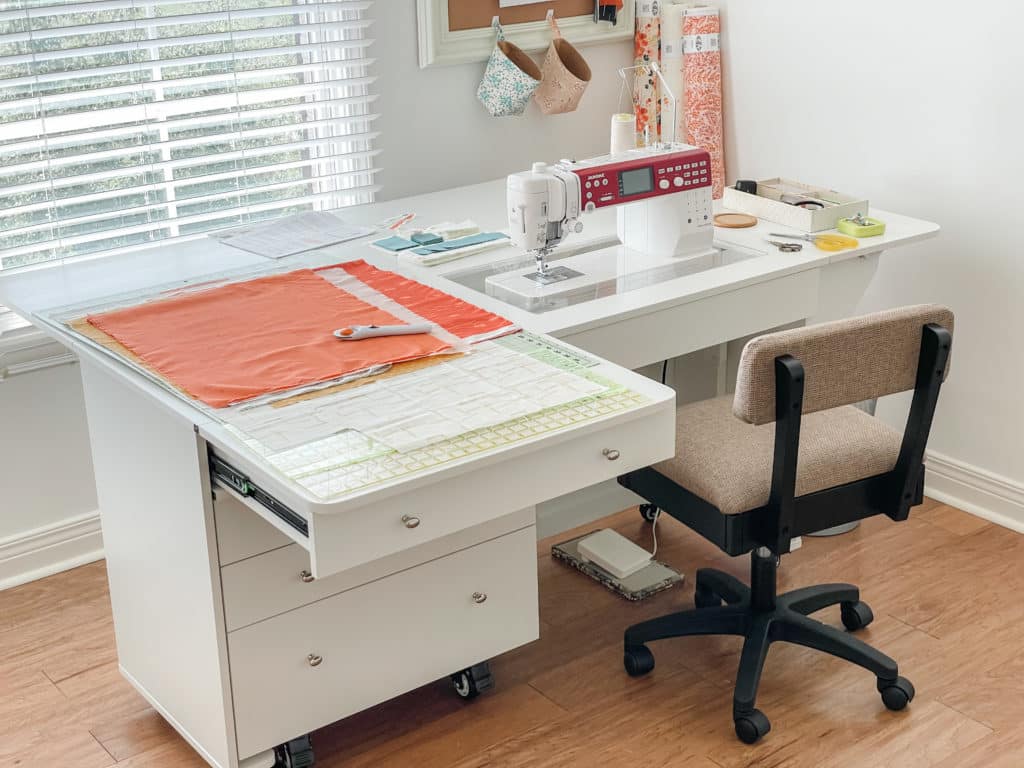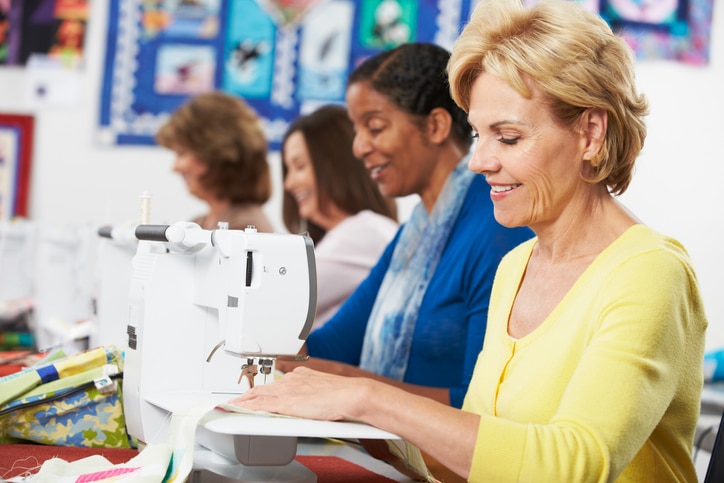In an era marked by a flourishing do-it-yourself (DIY) culture, sewing has experienced a remarkable resurgence as a creative and practical skill. Whether you’re a seasoned seamstress or a novice looking to explore the world of sewing, having access to a reliable sewing machine is essential. But what if you don’t own one?
Enter the world of sewing machine rentals – a convenient and cost-effective solution for those seeking to embark on sewing projects without the commitment of purchasing a machine.
In this article, we explore the growing trend of sewing machine rentals, discussing how and where you can rent these versatile tools, what to consider when choosing a rental, and the benefits and potential drawbacks of this convenient service. If you’re curious about sewing machine rentals, read on to discover how they can fit into your sewing repertoire.
Assessing Your Sewing Needs
Preparation is key when renting a sewing machine. You’ll likely have a limited time window with the rental sewing machine, so having all your ducks in a row is crucial before you rent.
Know Your Project Requirements
Firstly, knowing what projects you’ll be working on with your sewing machine is essential. This will help you determine which accessories to get with your sewing machine and how you’ll need to set up the sewing machine. Some sewing machines are specifically designed for certain types of sewing, so grabbing the wrong rental can cause quite a setback.
Evaluate Your Skill Level
Evaluating your sewing skill level is crucial when considering a sewing machine rental. For beginner sewists who are still learning to sew and are less familiar with sewing machines, a pre-set machine ready to use straight out of the box may be the most suitable choice. In contrast, experienced sewists often have particular preferences for settings and sewing styles and may prefer to set up the machine to their specifications. Therefore, the choice of machine can vary based on your sewing expertise and whether you prefer a more user-friendly or customizable option.
Estimate Rental Duration
Also, estimate how long you’ll need the machine to complete your project. This information will be helpful when contacting the store or online platform you’ll rent from. Knowing how long you’ll need the sewing machine for and giving an accurate estimate of how much usage it will get will be valuable information to the person you’re renting from.
Consider Your Sewing Space
Be sure not to overdo it on the sewing machine regarding space availability! Sewing workshops can get crowded with clutter without the proper sewing storage options, so be aware of what your sewing space can handle regarding machine rentals.

Researching Rental Options
When you’ve decided to kick off your upcoming sewing project and need to secure a sewing machine for rent, the subsequent challenge lies in locating a suitable source. This task can be particularly challenging for those who do not have easy access to rental sewing machines.
Let’s look at the most likely ways to rent a sewing machine for your next sewing endeavor. From local supply to online rentals, there are plenty of ways for sewists to get their start on a machine without dropping a fortune purchasing one.
Local Sewing Supply Stores
If you have a local sewing supply store nearby, this might be the best place to start your hunt for a sewing machine rental. Small mom-and-pop sewing shops can be a great place to start, but larger chains like Joann Fabrics offer sewing machine rentals at certain stores. The best way to determine if a store offers rentals is to check their website or call ahead.
Benefits of Local Stores
One of the primary benefits is immediate access to the equipment, allowing you to inspect the machine’s condition and accessories before committing to the rental. You can receive in-person assistance, valuable guidance, and even hands-on tutorials from store staff, which is particularly helpful for beginners.
Drawbacks of Renting from Local Stores
On the downside, limited availability and store operating hours can also pose a challenge. Furthermore, rental terms and policies can be restrictive, with shorter rental periods and less flexibility than online rental platforms.
If you find a store that offers sewing machine rentals, it’s time to bring out the question sheet to ensure you’re getting the right sewing machine for the job. Here are a couple of questions you should ask the store owner/manager:
- What is the rental cost?
- Is there a security deposit?
- What type of sewing machine is it?
- Is the sewing machine in good working condition?
- Are accessories included?
- What is the rental duration?
- What happens if the machine malfunctions during the rental?
Prepare yourself for any and all situations when renting a sewing machine. They can be finicky machines, so you’ll want to be covered if something goes wrong while renting them. By asking these questions, you’ll ensure a smooth sewing machine rental experience and minimize any potential issues or misunderstandings.
Online Rental Platforms
While some of us are fortunate to have a cluster of sewing shops in our vicinity willing to provide sewing machine rentals, others may be less fortunate. If local stores either aren’t a feasible option or don’t have any sewing machines available to rent, you can always check the internet. Online platforms like Little Hand Creations offer sewing machine rentals at the click of a button. You can typically find specialized rental websites that focus on promoting sewing classes and machine rentals as a way to build the sewing community.
Considerations for Online Rentals
This can be a tricky option as there are limited ways to test a sewing machine before renting it this way. Check the website’s reviews and locate any tips from previous customers who have rented from them to see whether the rental system works. Online rental platforms are limited, but these could be the best options for sewists without any local shops to choose from.
Community Sharing Programs
The sewing community is vibrant and continually expanding, so don’t hesitate to become a part of it. Numerous community-driven initiatives and online forums provide opportunities to connect with fellow sewing enthusiasts and rent a sewing machine from a trusted hobbyist. Within this supportive community, renting a sewing machine online may be the ideal choice, as trust and encouragement abound.
Additional Benefits of Joining a Sewing Community
Community hubs like Facebook groups or Reddit have online forums for sewists to collaborate, discuss their projects, and trade tips. Reach out to online community members to see if they provide rentals of their equipment or can point you in the right direction to find rentals near you!
It’s worth watching out for local sewing groups or associations in your area, as they can provide a valuable sense of belonging and resources. Joining such a community can be an excellent way to make new friends and become an integral part of the sewing community!

Transportation and Delivery
One of the most nerve-wracking parts of sewing machine rentals is the transportation and delivery of the device. While damage during transportation is uncommon, you’ll be gripping the steering wheel like your sewing machine’s life depended on it. Whenever you rent sewing machine equipment from a local supplier, ensure safety measures are taken during transportation.
When renting a sewing machine from an online distributor, the safety of the delivery is often beyond your control. Nonetheless, promptly reporting any damage to the machine during delivery is essential. Doing so is valuable to avoid any undue responsibility for the issues that may arise. This proactive step ensures that any problems are adequately documented and addressed.
Tips for Safe Transportation
Here are a few tips on how to transport the sewing machine rental safely to avoid damages and delivery disputes:
- Vehicle Choice: If you can access a vehicle, select one that can safely accommodate the sewing machine. Most standard cars have enough space for smaller sewing machines, but larger models may require a larger vehicle, like an SUV or a van.
- Protecting the Machine: Before loading the sewing machine into your vehicle, ensure it is adequately secured and protected. Use the original carrying case or a padded bag to shield it from potential damage during transit. Wrapping the machine in a clean sheet or blanket can provide additional protection.
- Stabilize the Machine: Ensure the sewing machine is secured within your vehicle. Place it on a flat, stable surface to prevent it from tipping or shifting during transportation.
- Fragile Components: If the sewing machine has delicate components or accessories, such as a delicate needle or an embroidery arm, remove and pack them separately to prevent breakage.
- Seat Belts: If your vehicle has seat belts in the backseat, consider using them to secure the sewing machine in place.
- Drive with Caution: Drive carefully and avoid sudden stops, sharp turns, or rough road conditions. Ensure the sewing machine remains stable throughout the journey.
- Check Rental Terms: Review the rental terms to ensure there are no specific requirements for transporting the machine. Some rental agreements may specify certain conditions or restrictions.
- Assistance: If the sewing machine is large or heavy, consider enlisting help for loading and unloading. Two people can make the process safer and more manageable.
- Return Process: Understand the return process and the designated location for returning the sewing machine. Make sure to return it on time to avoid any late fees.
Caring for the Sewing Machine During Rental
Caring for a sewing machine, especially during a rental, is crucial to maintaining its performance and ensuring a smooth sewing experience. Start by cleaning the machine and regularly dusting it with a soft, lint-free cloth.
Maintenance Tips
Avoid canned air, as it can push dust further into the machine. Remove lint and thread remnants from the bobbin area and feed dogs after each use to prevent clogs. Maintain the needle by changing it regularly to ensure smooth stitching and prevent fabric snags. Wind bobbins evenly to prevent jams, use the correct bobbin size, and follow any lubrication instructions specified in the user manual, if required.
Adjust thread tension as needed to achieve even stitches, and keep track of accessories like presser feet and additional attachments, returning them with the machine. Familiarize yourself with the machine’s user manual for maintenance and troubleshooting information. When transporting the machine, secure it in a padded case or cover to protect it from damage. Respect rental terms and restrictions on usage and promptly report any issues or damage to the rental provider.
Return in Good Condition
Finally, return the sewing machine in the same condition as when you rented it, conducting a final inspection to ensure it’s clean, properly maintained, and in working order. Don’t be afraid to contact community sewing groups for help on specific cases.

Explore Alternatives to Renting a Sewing Machine
If renting a sewing machine doesn’t align with your preferences or needs, several alternatives are worth considering:
- Borrow from Friends or Family: Ask friends or family members if they have a spare sewing machine you can borrow. This option is often cost-free and can provide access to a machine you’re familiar with.
- Join a Makerspace or Sewing Community: Many communities have maker spaces or sewing clubs where members can use shared equipment, including sewing machines. This is an excellent way to connect with fellow sewing enthusiasts and access sewing equipment without a rental fee.
- Purchase a Second-hand Machine: If you anticipate sewing projects in the long term, purchasing a second-hand sewing machine might be a cost-effective solution. You can find affordable, quality machines from reputable sellers, both online and in local classified ads.
- Attend Workshops or Classes: Enroll in sewing workshops or classes at local community centers, fabric stores, or educational institutions. These often provide access to sewing machines during the class and allow you to build your skills.
- Visit Sewing Cafes or Studios: Some urban areas have sewing cafes or studios where you can rent sewing machines by the hour. This can be an excellent option for occasional use and provides access to various machines.
- Online Sewing Services: Consider using online sewing services that offer custom sewing or alterations. You can send your fabric and design specifications; they will complete the project using their equipment.
Takeaways to Assist Your Sewing Journey
In the sewing world, the availability of sewing machine rentals has become a valuable resource for individuals with varying needs and levels of expertise. From beginners seeking a cost-effective way to explore their sewing passion to experienced sewists requiring a specialized machine for specific projects, the convenience of rentals offers flexibility and access.
As discussed in this article, the considerations when renting a sewing machine include understanding your skill level, assessing project requirements, examining rental terms, and caring for the machine during your use. While renting from a physical store may provide personalized guidance and immediate access, online rental options offer convenience and affordability.
If renting a sewing machine isn’t ideal for your circumstances, alternatives such as borrowing from friends or joining a local sewing community can fill the gap. Whichever path you choose, the world of sewing is now more accessible than ever, with numerous options to help you bring your creative visions to life.
